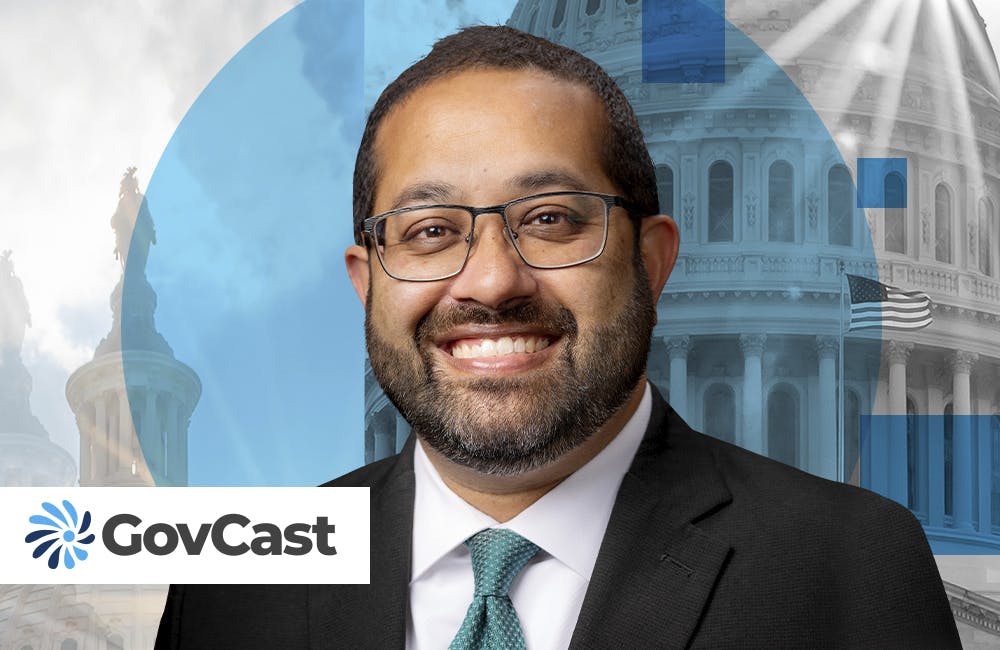COVID-19 Setting Foundation for Improvements in Veterans Care
Emergency investments in telehealth and digital services allowed for broader access to VA health care that will persist beyond the pandemic.

The Department of Veterans Affairs’ emergency expansion in telehealth capacities and digital connectivity at the start of the COVID-19 pandemic has laid the groundwork for easier access to critical services nationwide, VA officials said during the an AFCEA Bethesda Health IT virtual event.
The demands of social distancing required the agency to further build out its modernized IT to allow for continuity of services, especially with VA care centers no longer able to operate at the full capacity they maintained pre-pandemic. Leadership across VA outlined how these initiatives over the past year will allow the agency to provide an expanded scope of remote services even after the current public health crisis is brought to a close.
This has included a considerable expansion in VA telehealth capacities, covering advances in both sophistication and scope of connectivity intended to improve overall health outcomes.
“We have a synchronous telehealth program that’s real-time video. We also have an asynchronous telehealth program that is asynchronous communications like taking an image at one location and having it interpreted by a provider at another location. And then we have our remote patient monitoring program. That’s where VA will provide veterans with equipment and connection to a care coordinator, and we monitored this for them between visits to make sure they’re doing well with their chronic conditions and health outcomes,” said Dr. Kevin Galpin, executive director for telehealth services at VA’s Office of Connected Care.
These developments in telehealth have already shown dividends for providing care and expertise for veterans with particular conditions, with specialists able to offer medical consultation remotely.
“We can enhance quality by putting another set of eyes in an [intensive care unit] from a distant location. We’re engaging veterans in between visits and providing the right care to the right veteran at the right time from a national expert in some area. To give you all a sense of the scope — last year in 2020, we provided over 5.6 million episodes of care to over 1.6 million veterans,” Galpin said.
These investments in modernized IT and expanded digital services have also facilitated the rollout of the COVID-19 vaccine, with the VA making updates to their mobile applications to alert veterans to vaccine availability and schedule appointments.
“Trying to make it easy for veterans to get the vaccine from the VA, and understand their options regarding the vaccine, has been kind of our top priority over the past few months,” said Drew Myklegard, executive director of VA Office of Information and Technology’s Enterprise Program Management Office. “What that means is letting the technology just get out of the way and make it easy for people to understand what they need to do.”
One of the office’s accomplishments was in leveraging text message appointment reminders to offer vaccine appointments to veterans via text instead of a phone call.
“Over 150,000 first dose appointments have been scheduled via text message instead of the phone call,” Myklegard said.
VA leadership has remained attentive to the end goal of improving care. The result has been a deeper understanding of IT investments already in place to further develop those lines going forward.
“I think what we’ve learned from the pandemic has been that the infrastructure by which we are able to deliver care, regardless of the scenario, has to be in place,” said Dr. Ryan Vega, chief officer for health care innovation and learning at the Veterans Health Administration’s Office of Discovery, Education & Affiliate Networks. “This infrastructure has to be informed by the clinicians, the patients and experiences they desire … the technology can enable us to drive to those outcomes. But it’s still a driver — it is not the end all be all. So how we embrace these new and innovative processes over the next decade will be telling.”
This is a carousel with manually rotating slides. Use Next and Previous buttons to navigate or jump to a slide with the slide dots
-

DOD Has a New Cyber Resiliency Assessment Program
Defense officials tout the continuous assessment feature and scalability of the new program amid increased cyber threats.
5m read -

Transitioning Systems for Modern Agency Missions
IT modernization is a constant process necessary for improving customer service, mission delivery and collaboration.
40m watch -

Cyber Resilience and Recovery Amid Evolving Cyber Threats
Data durability is a key aspect of NIST’s cybersecurity framework for public and private organizations.
21m listen -

How Tech Enables Environmental Justice at EPA
The agency wants to eliminate bias and establish new tech standards to reduce greenhouse gas emissions.
39m listen








